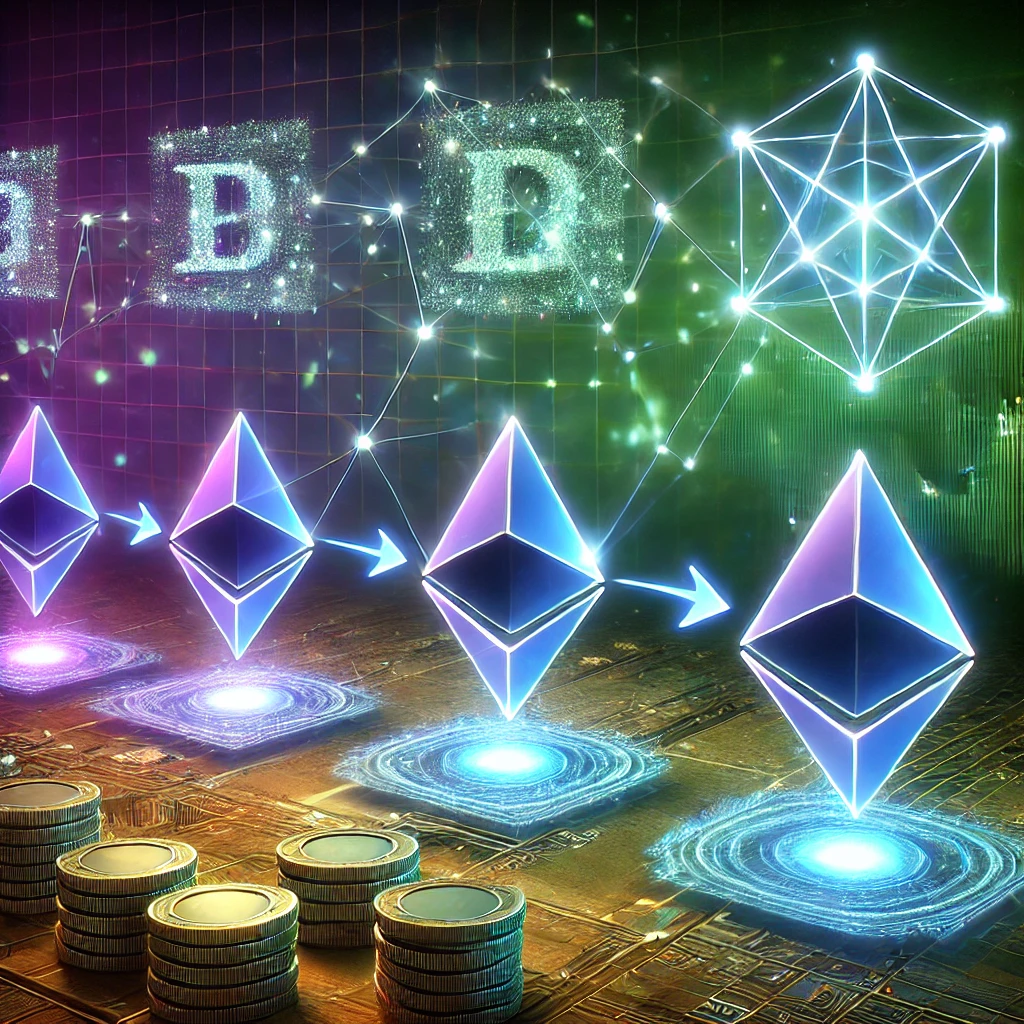
Estimated reading time: 10 minutes
Blockchain is a decentralized digital ledger that records transactions across multiple computers. This ensures that the record cannot be altered retroactively without altering all subsequent blocks, providing a high level of security and transparency. Each block contains a cryptographic hash of the previous block, a timestamp, and transaction data, making it tamper-proof.
Smart contracts directly encode the terms of agreements into code, allowing them to self-execute and enforce terms automatically when predetermined conditions are met. They eliminate the need for intermediaries and reduce the risk of human error or manipulation.
Table of contents
Benefits of Blockchain in Procurement
The integration of blockchain technology into procurement processes promises to revolutionize the way businesses operate, offering significant enhancements in transparency, security, and efficiency. Blockchain’s decentralized and immutable ledger system provides unparalleled traceability, ensuring accurate recording of every transaction and real-time auditability.
This breakthrough in technology not only minimizes the risk of fraud and errors but also streamlines procurement operations by automating and securing contracts through smart contracts. As businesses strive to remain competitive and compliant, the adoption of blockchain in procurement stands out as a transformative solution that addresses many of the industry’s most pressing challenges.
Supply Chain Transparency Through Blockchain
Blockchain technology revolutionizes supply chain transparency by offering an immutable and decentralized ledger of all transactions. This innovative approach brings several key benefits to supply chain management:
Blockchain records every transaction in a tamper-proof manner. Once added to the blockchain, no one can alter or delete the transaction. This immutable nature of blockchain records guarantees that all stakeholders in the supply chain have access to accurate and reliable data.
Traceability
One of the standout features of blockchain is its ability to trace the complete journey of a product. From the initial stages of manufacturing to the moment the product reaches the end user, every step is documented. This comprehensive traceability ensures that stakeholders can verify the authenticity of the product at any point in its lifecycle.
Authenticity and Trust
By providing a clear and unalterable record of a product’s journey, blockchain significantly enhances the authenticity of the product. Consumers and stakeholders can trust that the product is genuine, as the blockchain ledger provides verifiable proof of its origin and path. This trust is crucial in industries where counterfeiting and fraud are prevalent, such as pharmaceuticals, luxury goods, and food.
Fraud Reduction
Blockchain’s transparency and traceability features work together to reduce fraud. Since the system records all transactions and makes them visible to authorized participants, malicious actors find it extremely difficult to introduce counterfeit products or falsify information. This heightened level of security and accountability helps in minimizing fraudulent activities within the supply chain.
Stakeholder Collaboration
Blockchain promotes collaboration among various stakeholders in the supply chain, including manufacturers, suppliers, logistics providers, and retailers. With access to a shared and reliable data source, these stakeholders can coordinate more effectively, streamline operations, and resolve disputes quickly. This collaborative environment leads to improved efficiency and cost savings.
Enhanced Security Through Blockchain
Blockchain technology offers robust security features that significantly bolster the protection of sensitive data, particularly in procurement processes. Its cryptographic foundations and decentralized nature introduce multiple layers of security, making it an invaluable tool for securing procurement activities. Here are several key aspects that contribute to this enhanced security:
Cryptographic Security
At the heart of blockchain’s security is its use of advanced cryptographic techniques. Each transaction is encrypted and linked to the previous transaction using cryptographic hashes. This creates a chain of blocks (hence the name “blockchain”) that is incredibly difficult to alter. If a malicious actor attempts to change the data in one block, they would need to alter all subsequent blocks, which is computationally infeasible. This ensures that procurement data remains intact and trustworthy.
Decentralization
Blockchain operates on a decentralized network of nodes, each holding a copy of the entire blockchain. This decentralization means that there is no single point of failure. If one node is compromised, the other nodes detect and reject any tampering attempts, maintaining the integrity of the blockchain. This distribution of data across multiple nodes makes the procurement process more resilient against attacks and ensures continuous availability of data.
Immutable Records
Once a transaction is recorded on the blockchain, it cannot be altered or deleted. This immutability provides a permanent and unchangeable audit trail of all procurement activities. Any attempts to alter records would be immediately visible to all participants in the network. This feature not only enhances security but also adds a layer of accountability, as every action is recorded and verifiable.
Access control and permissions
Designers can implement blockchain systems with sophisticated access control mechanisms, ensuring that only authorized individuals access sensitive procurement data. Developers write smart contracts, which are self-executing contracts with terms directly in code, to enforce specific access permissions and automate procurement processes.
This ensures that sensitive data is only accessible to those with the proper credentials, reducing the risk of unauthorized access.
Enhanced data integrity
The blockchain’s cryptographic validation processes maintain data integrity throughout the procurement lifecycle. Each block contains a timestamp and a reference to the previous block, creating a verifiable sequence of events. This structure guarantees that the data remains accurate and untampered from the moment of recording.
Reduced Costs Through Blockchain
Blockchain technology offers substantial cost savings in procurement by streamlining processes and eliminating unnecessary intermediaries. Here’s how blockchain achieves these cost reductions:
Elimination of intermediaries
Traditional procurement processes often involve multiple intermediaries such as brokers, agents, and third-party verification services. Each intermediary adds to the overall cost and complexity of transactions. Blockchain technology removes the need for these middlemen by providing a decentralized and transparent platform where transactions can be directly validated and recorded by the network participants. This direct peer-to-peer interaction significantly cuts down on the fees and commissions typically paid to intermediaries.
Also read: What is Blockchain Technology: Everything You Need to Know
Automation with Smart Contracts
Smart contracts are self-executing contracts with the terms of the agreement written directly into code. They automatically enforce and execute contractual agreements when predefined conditions are met. This automation eliminates the need for manual processing, which not only speeds up the transaction process but also reduces human error and the administrative burden.
By automating routine tasks such as invoicing, payment processing, and compliance checks, smart contracts help reduce operational costs and enhance efficiency.
Faster transaction settlements
Blockchain technology enables faster settlement of transactions compared to traditional systems, which often involve lengthy processing times due to the need for manual verification and the involvement of multiple parties. The instantaneous nature of blockchain transactions reduces delays, allowing procurement processes to be completed more quickly.
This acceleration in transaction times helps businesses to manage their cash flow more effectively and reduces the holding costs associated with delayed payments.
Improved inventory management
Blockchain provides real-time visibility into the status and location of goods in the supply chain. This enhanced visibility allows companies to optimize their inventory management practices, reducing the need for excess stock and minimizing storage costs. Accurate and timely information about inventory levels helps prevent overstocking and understocking, leading to more efficient use of resources and cost savings.
Reduction in fraud and errors
Fraud and errors in procurement can lead to significant financial losses. Blockchain’s transparent and immutable ledger makes it difficult for fraudulent activities to go undetected. Every transaction is recorded and can be audited, ensuring that the data is accurate and reliable. This reduction in fraud and errors translates to direct cost savings, as companies can avoid the expenses associated with correcting mistakes or dealing with fraudulent transactions.
Streamlined compliance and reporting
Compliance with regulatory requirements often involves extensive documentation and reporting, which can be both time-consuming and costly. Blockchain simplifies compliance by providing a clear and verifiable audit trail of all transactions. The immutable nature of blockchain records means that compliance audits can be conducted more efficiently, reducing the time and resources required for regulatory reporting. This streamlining of compliance processes results in lower administrative costs.
Enhanced supplier relationships
Blockchain fosters greater trust and collaboration between buyers and suppliers by providing a transparent and tamper-proof record of all transactions. This improved trust reduces the need for extensive due diligence and verification processes, which are often costly and time-consuming. Stronger supplier relationships can also lead to better negotiation terms and bulk purchasing discounts, further reducing procurement costs.
Also Read: Blockchain Technology Revolutionizes Africa’s Boda Boda Taxi Industry
Implementing Blockchain in Procurement
Initial assessment
Before implementing blockchain, companies should conduct a thorough initial assessment to identify the specific areas within procurement that can benefit from blockchain technology. This involves a detailed analysis of the current procurement process to pinpoint pain points, inefficiencies, and areas prone to errors or fraud.
The assessment should include evaluating the procurement cycle, from supplier selection and contract negotiation to order placement and payment processing. By understanding the existing challenges, companies can determine how blockchain can streamline operations, enhance transparency, and improve data accuracy.
This step is crucial for setting clear objectives and ensuring the implementation aligns with the company’s strategic goals.
Choosing the right blockchain platform
Selecting the appropriate blockchain platform is critical for the success of a blockchain-based procurement system. There are several blockchain platforms available, each offering unique features and capabilities. Companies should choose a platform that best aligns with their specific procurement needs and objectives.
Popular platforms such as Ethereum, Hyperledger, and Quorum offer varying levels of decentralization, security, scalability, and support for smart contracts. Evaluating factors such as transaction speed, cost, interoperability, and the platform’s developer community can help in making an informed decision. The chosen platform should support the necessary functionalities and be adaptable to future procurement requirements.
Developing Smart Contracts
Smart contracts are the backbone of blockchain-based procurement systems. These self-executing contracts with the terms of the agreement directly written into code enable automation and enforcement of procurement agreements. Developing smart contracts involves defining the contract terms and conditions, including delivery schedules, payment terms, and performance metrics.
Once coded, these contracts automatically execute predefined actions when certain conditions are met, reducing the need for manual intervention and minimizing the risk of errors or disputes. Thoroughly testing smart contracts for accuracy and reliability is essential, as flaws in the code can lead to significant operational issues.
Integrating with existing systems
To maximize the benefits of blockchain technology, it is vital to integrate it with existing procurement systems. This integration ensures a seamless transition and minimizes disruptions to current operations. Companies should develop a robust integration plan that includes data migration, system interoperability, and real-time data synchronization.
Leveraging APIs and middleware can facilitate communication between blockchain and legacy systems, enabling a cohesive and efficient procurement process. Proper integration allows for the continuous flow of information, enhancing transparency, traceability, and overall efficiency in the procurement cycle.
Training and change management
Implementing blockchain technology in procurement requires a significant shift in processes and mindset. Companies should invest in comprehensive training programs to equip employees with the necessary skills and knowledge to effectively use blockchain and smart contracts. Training should cover the basics of blockchain technology, the specific functionalities of the chosen platform, and the practical aspects of managing and executing smart contracts.
Additionally, effective change management strategies are essential to address resistance and ensure smooth adoption. This includes clear communication of the benefits, involvement of key stakeholders, and continuous support to help employees adapt to the new system.
Challenges of Implementing Smart Contracts in Procurement
Implementing smart contracts in procurement offers great promise but also comes with several challenges. Here are the main issues that organizations face:
Lack of standardization
One big problem is the lack of standardization and compatibility between different blockchain platforms. Since the blockchain ecosystem is so fragmented, it can be hard to integrate smart contracts with existing procurement systems. To fix this, there need to be common protocols and frameworks that allow different platforms to communicate and exchange data smoothly.
Unclear legal frameworks
Another major issue is the legal and regulatory uncertainty around smart contracts. While smart contracts have many benefits, their legal standing and compliance with current laws are unclear in many places. This uncertainty can be risky for organizations, especially for international transactions.
Additionally, the fact that smart contracts are unchangeable makes it hard to modify or cancel them if needed. To solve these issues, industry players, legal experts, and policymakers need to work together to create clear guidelines and standards.
Technical complexity
Creating and using smart contracts is technically challenging. It requires specialized knowledge to design and deploy smart contracts that are secure, reliable, and efficient. Bugs or security flaws in the code can lead to financial losses, operational problems, and damage to the organization’s reputation. To manage these risks, organizations should invest in training programs to build their own capabilities or partner with experienced blockchain developers.
Discover more from The African Crypto
Subscribe to get the latest posts sent to your email.










